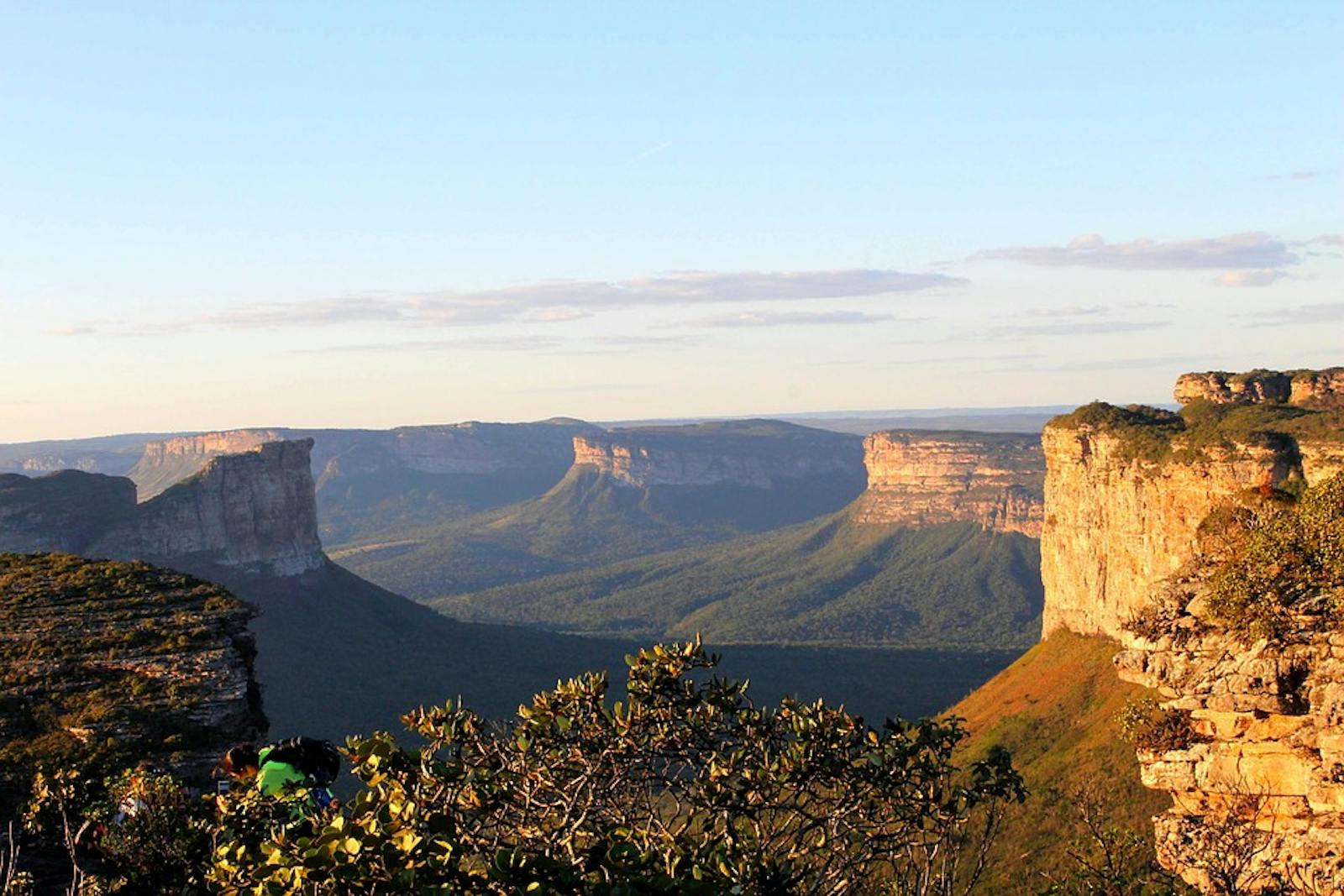Campos Rupestres Montane Savanna
The ecoregion’s land area is provided in units of 1,000 hectares. The conservation target is the Global Safety Net (GSN1) area for the given ecoregion. The protection level indicates the percentage of the GSN goal that is currently protected on a scale of 0-10. N/A means data is not available at this time.
Bioregion: Cerrado Savannas (NT13)
Realm: Southern America
Ecoregion Size (1000 ha):
2,645
Ecoregion ID:
566
Conservation Target:
33%
Protection Level:
8
States: Brazil
The critically endangered reticulate leaf frog is a narrow ranging species endemic to the Campos Rupestres Montane Savanna ecoregion, found only in two locations within the shrubland-savanna transition zones, primarily along riparian corridors (waterways) on which they depend for reproduction.
These frogs lay their egg clutches on leaves along creeks and streams, hanging them above the water so that when tadpoles hatch the fall directly in. The tadpoles grow up in the streams by hiding under rocks and scavenging on leaves and other detritus until they grow tails, become metamorphs and return to land. In fact, the life history of these rare frogs is so tied to the water cycle that they are very susceptible to any change.

The flagship species of the Campos Rupestres Montane Savanna ecoregion is the hooded visor bearer. Image credit: Creative Commons
The Campos Rupestres Montane Savannas are part of the Espinhaço Mountain Range in Brazil, an ancient plateau formed by pre-Cambrian crystalline rocks that extend from the North Bahia southward to Serra do Ouro Branco, near the historical city of Ouro Preto, Minas Gerais. The dominant vegetation is a type of savanna known as campos rupestres or “rock fields” that occurs between 700–2,000 m elevation. The climate is mesothermic with mild summers accompanied by a rainy season.
The Espinhaço Range is not continuous, but separated by deep and extensive river valleys, which leads to a patchy distribution of the campos rupestres landscape and richer species diversity due to the geographic separation of population into different niches. The campos rupestres are characterized by cerrado patches with sparse treelets and shrubs with thick bark, including pequi, murici do campo, Guabiroba do campo, and Neea theifera.
Surrounding these woody plants are various species of grass. The plants here are resilient, growing in a wide variety of inhospitable substrates including stone, rock (epilithic), recently decomposed stony soils, or sandy soils. Some plants in the ecoregion have responded by releasing waxy substance on their leaves to reflect heat, hairs to protect against radiation, or tightly rolled leaves secreting chemicals that make them more resistant to fire.
The Espinhaço Range has been recognized as a center of endemism for plants. Of the 538 threatened species of plants in the state of Minas Gerais, 358 (67%) are from campos rupestres. This ecoregion is also recognized as a center of endemism for lizards, amphibians, and birds. There are several endemic species that occur all along the ecoregion, but others are restricted to one or a few isolated fragments of campos rupestres.
For example, two hummingbirds from the genus Augastes are found in this ecoregion: the hooded visorbearer is confined to the northern section, while the hyacinth visorbearer is confined to the south. Other birds restricted to this ecoregion include Cipó canastero and Brasília tapaculo. Reptiles of the genus Tropidurus are numerous, including species of T. mucujensis, T. nanuzae, T. erythrocepalus and T. montanus. Amphibians species such as Hyla cipoensis and Physalaemus deimaticus have also adapted to this seasonally dry ecoregion. Endangered mammals include fossorial giant rat, orange-brown Atlantic tree-rat, and giant otter.
About 26% of the ecoregion is under protection. Most protected areas are located in the Espinhaço Range, in Serra do Cipó and Serra do Sincorá. Nonetheless, very little natural habitat remains outside of protected areas. The major threats in this ecoregion are mining, extraction of ornamental native plants, cattle ranching, tourism, fires, agribusiness, and urban expansion. Large areas of habitat are being altered for timber extraction and by the burning of savannas to increasing grazing areas.
The priority conservation actions for the next decade will be to: 1) mandate sustainable timber practices; 2) encourage natural resource-based management for agriculture; and 3) increase the number of and connectivity of protected areas.
Citations
1. Maria, J. 2019. Eastern South America: Southeastern Brazil https://www.worldwildlife.org/ecoregions/nt0703 Accessed January 25, 2019.
2. Davis, S.D., V.H. Heywood, O. Herrera-MacBryde, J. Villa-Lobos and A.C. Hamilton. 1997. Centres of Plant Diversity: A Guide and Straregy for their Conservation: Volume 3, The Americas. IUCN Publications Unit, Cambridge, U.K.
3. Harley, R. M.. 1988. Evolution and distribution of Eriope (Labiatae), and its relatives, in Brazil. Pages 71-120 in P. E. Vanzolini, and W. R. Heyer (editors ), Proceedings of a workshop on neotropical distribution patterns. Rio de Janeiro: Academia Brasileira de Ciências.
4. Ulisses Caramaschi, Carlos Alberto Gonçalves da Cruz, Raphael Lima, Reuber Brandão 2016. Pithecopus ayeaye. The IUCN Red List of Threatened Species 2016: e.T55839A107295713. http://dx.doi.org/10.2305/IUCN.UK.2016-3.RLTS.T55839A107295713.en. Accessed January 25, 2019.



